【臺灣山林復育協會《谷關七雄─屋我尾山生態之旅》活動紀實2017.10.22】中英文對照稿
Taiwan Reforestation Association
The Seven Heroes of Guguan- Mount Wuwowei Ecological Trip 2017/10/22
谷關七雄係指台灣中部谷關附近的七座中級山,此次我們前往的是屋我尾山,山上的入口位在大雪山林道31.2K,我們抵達後就順著稜線一路前進,直抵屋我尾山的三角點。
The Seven Heroes of Guguan are seven nearby peaks located in Guguan, central Taiwan. This time we are heading to Mount Wuwowei, its trailhead is on Daxueshan Forest Road at 31.2K. Today we hiked along the ridgeline to the triangulation station of Mount Wuwowei.
屋我尾山的這條稜線西北側是東卯溪,東南側則是大甲溪。東南側的山坡列屬1433號土砂捍止保安林,面積5,405公頃,目的是防止砂土崩壞淤積大甲溪,以維護谷關、天輪、新天輪、馬鞍寮、社寮角等電廠。
In the northwest side of the Mount Wuwowei ridgeline is the Dongmao River, and in the southeast side is the Dajia River. The hillside of the southeast side is listed as soil conservation forest No. 1433 in the size of 5,405 hectares. Its purpose is to prevent landslide and sand from depositing in Dajia River as to protect Guguan, Tianlun, New Tianlun, Ma’anliao and Sheliaojiao Power Plants.
這片森林也是台灣黑熊在中台灣重要的棲息地。但稜線西北側的山坡,卻因非保安林,故有一段種植了人工的經濟林,樹種有巒大杉、台灣杉。這使得稜線的一邊是天然林,一邊則是人造林,天然林具有生態保育、水土保持等功能,而人工林則單純以經濟生產為目的。
The forest is also an important habitat in central Taiwan for Taiwan Formosan Black Bear. The hillside in the northwest side, however, isn’t listed as soil conservation forest. Economic forests such as Cunninghamia konishii and Taiwania cryptomerioides were planted in some of the area. As a consequence, on one side of the ridgeline is natural forest, and the other side is man-planted forest. Natural forest serves the important purposes of ecological preservation and soil conservation, while man-planted forest serves no other purposes than economical use.
此區域的天然林,屬於海拔1,500~2,500公尺間的櫟林帶,櫟林就是以殼斗科(Fagaceae)櫟屬(Quercus)植物為優勢的森林。這群殼斗科植物的果實,通常是野生動物(台灣黑熊)入冬前,重要的食物來源。因此這樣的天然林若開墾經營成人工林、果園、遊樂區等,定會對野生動物造成很大的影響。
The forest here belongs to oak forest at elevation height 1,500~2,500m. Oak forest is a forest dominated by plant species in Fagaceae family and Quercus genus. The acorns of the Fagaceae plants are usually the important food source in the winter for wild animals such as Formosan Black Bear. Thus, if a natural forest like this is operated as man-planted forest, fruit farm, and recreation area, it’s going to have major impacts on wild animals.
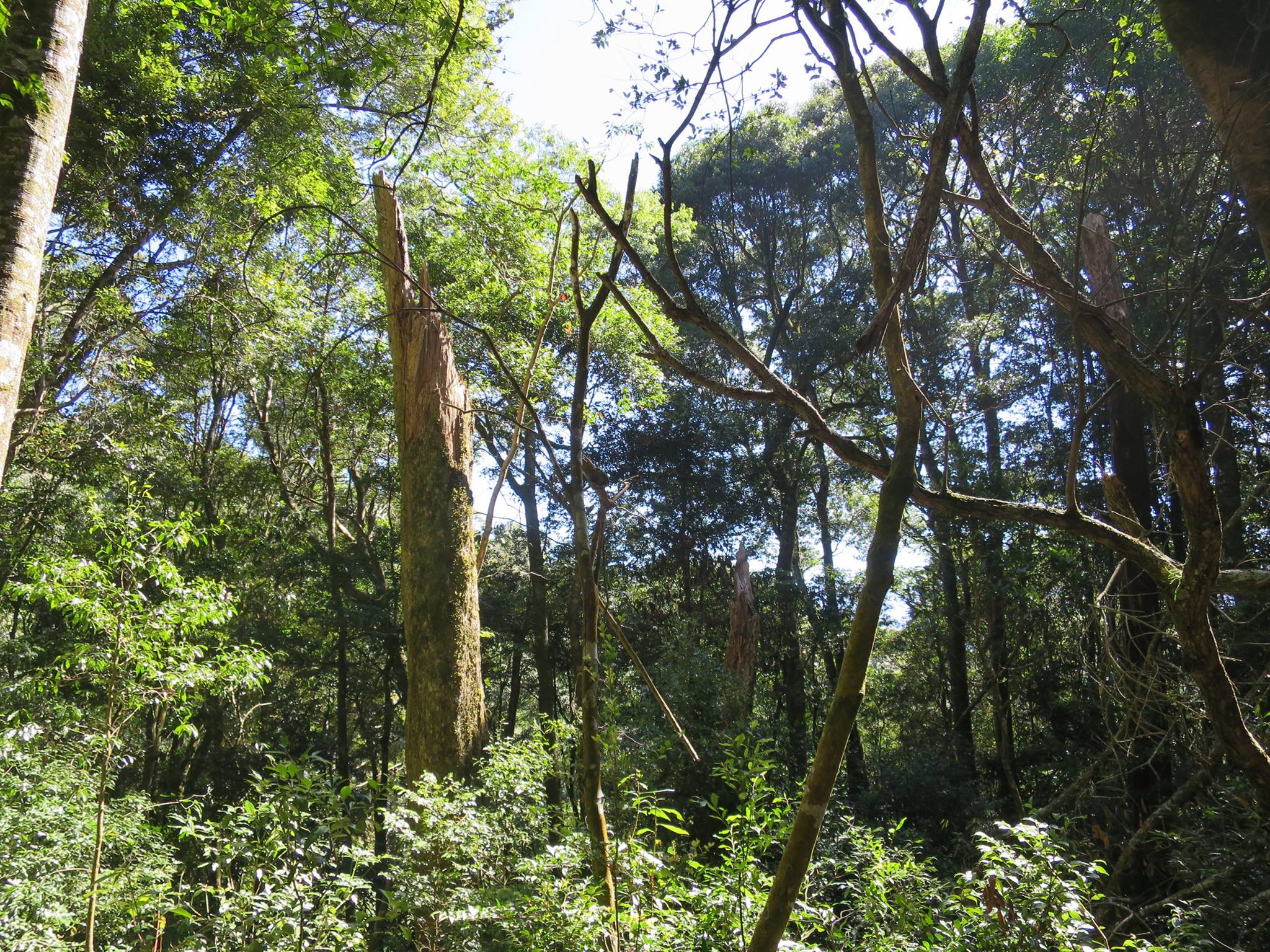
此區域位於於雲霧帶,因降雨量大,若森林遭破壞,山坡就易崩塌,故這樣的區域亦是國土保安的核心區,在氣候變遷愈來愈嚴重的狀況下,像在這樣易崩塌的強降雨區,經營的人工林是否恰當?也應重新來檢視及謀求改善!
This area is referred to as prevalent cloud zone. Receiving frequent rainfall, the hillside is more vulnerable to collapse if the forest is destroyed. That is to say, the area is crucial to our homeland security. With severe climate change affecting the planet, we must reconsider whether it is suitable to operate a man-planted forest in a heavy precipitation hillside at a risk of collapse.
臺灣原生的殼斗科,廣義來說有4屬約52種(分類群):山毛櫸屬(Fagus)、櫟屬(Quercus)、石櫟屬(Lithocarpus)、苦櫧屬(Castanopsis),其中櫟屬就佔了24 種。上述的櫟林帶,也有學者稱為「樟殼林」,意指以樟科和殼斗科為優勢的森林,故此次的生態調查中,我們就看到了有許多樟科的大樹,如青葉楠、長葉木薑子、白新木薑子。
Tawan native Fagaceae family is divided into 4 genuses, about 52 groupings: Fagus, Quercus, Lithocarpus and Castanopsis. There are 24 kinds in Quercus genus. The oak forest is also referred to as “Mixed stands of Fagaceae and camphora”, meaning the forest dominated by Fagaceae and camphora. In the survey, we observed many giant trees of the botanical family Lauraceae, such as Machilus zuihoensis var. mushaensis, Litsea acutivena, and Neolitsea sericea.
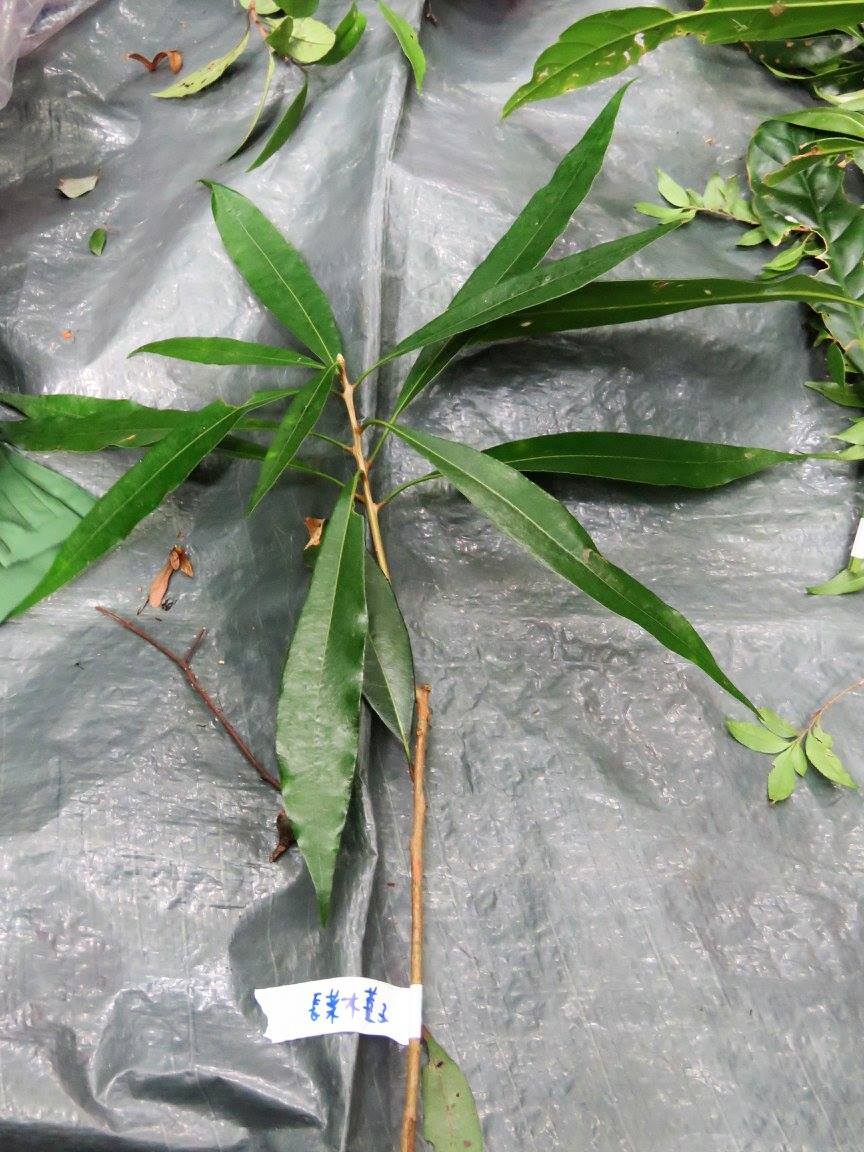
長葉木薑子
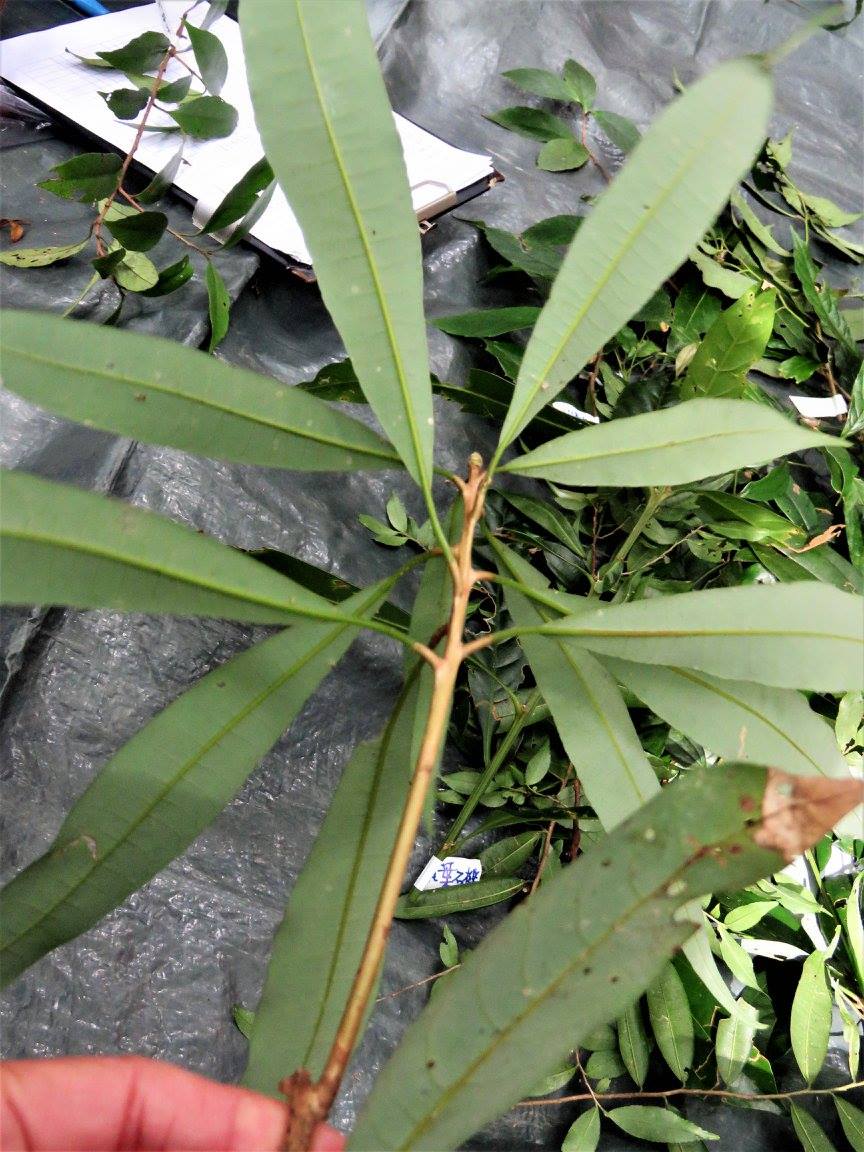
長葉木薑子-葉背
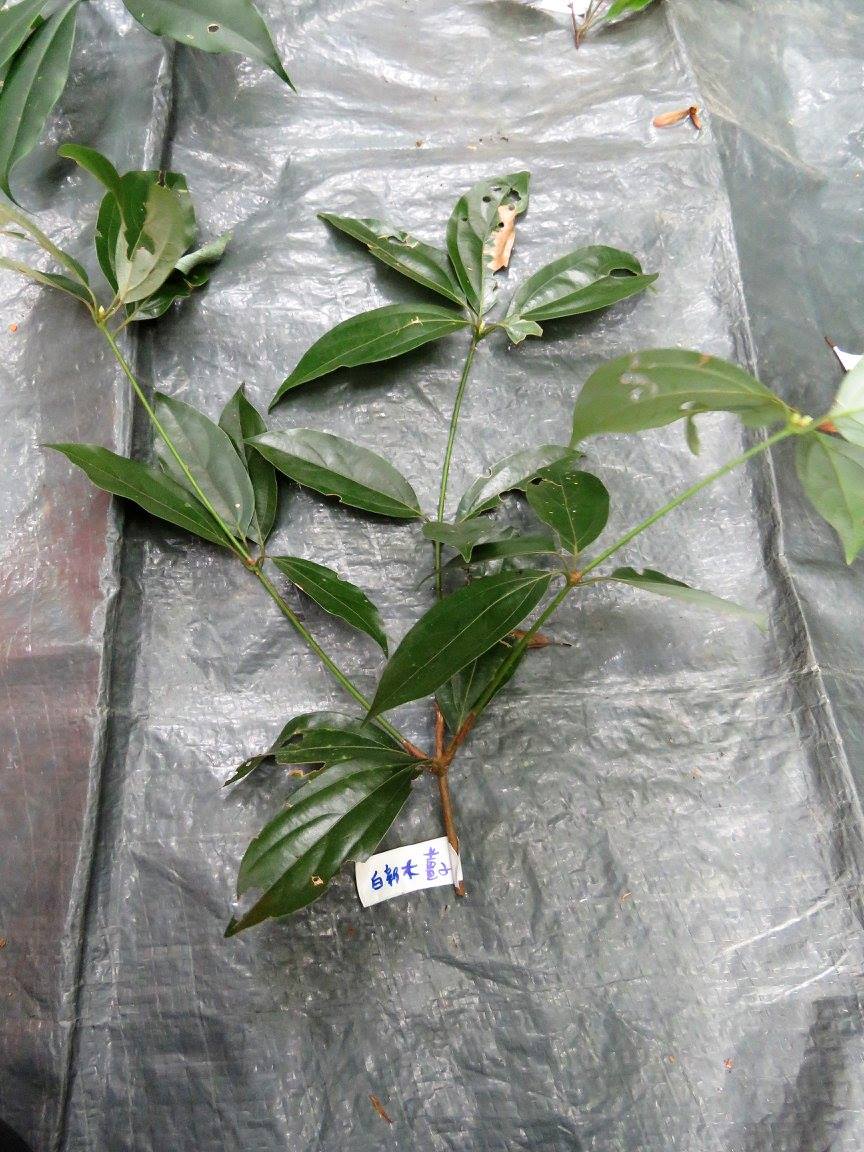
白新木薑子
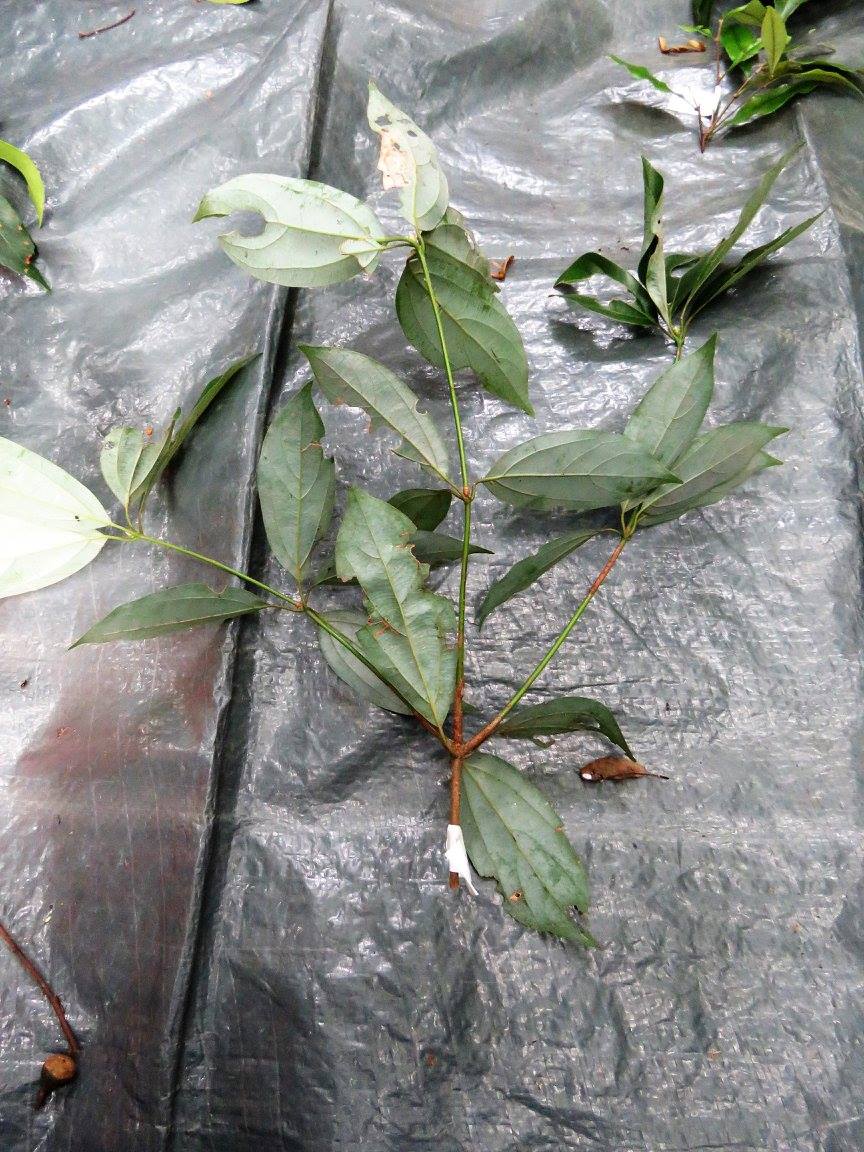
白新木薑子-葉背
為了帶大家瞭解這裡的森林生態,我們在距離屋我尾山的三角點約8分鐘路程的緩坡平台處,拉設了20m x 20m的樣區,此樣區刻意包圍了一棵高30m的木荷大樹,這個樣區的植物社會以「木荷─墨點櫻桃」為優勢(調查資料附件)。
To understand the ecology in the forest, in a gentle slope area about eight minutes walking distance from the triangulation station, we set up a 20 meters by 20 meters sample area. We purposely included a 30-meter tall Schima superba. The dominant species of the plant society in the sampling area is Schima superba-Prunus phaeosticta.
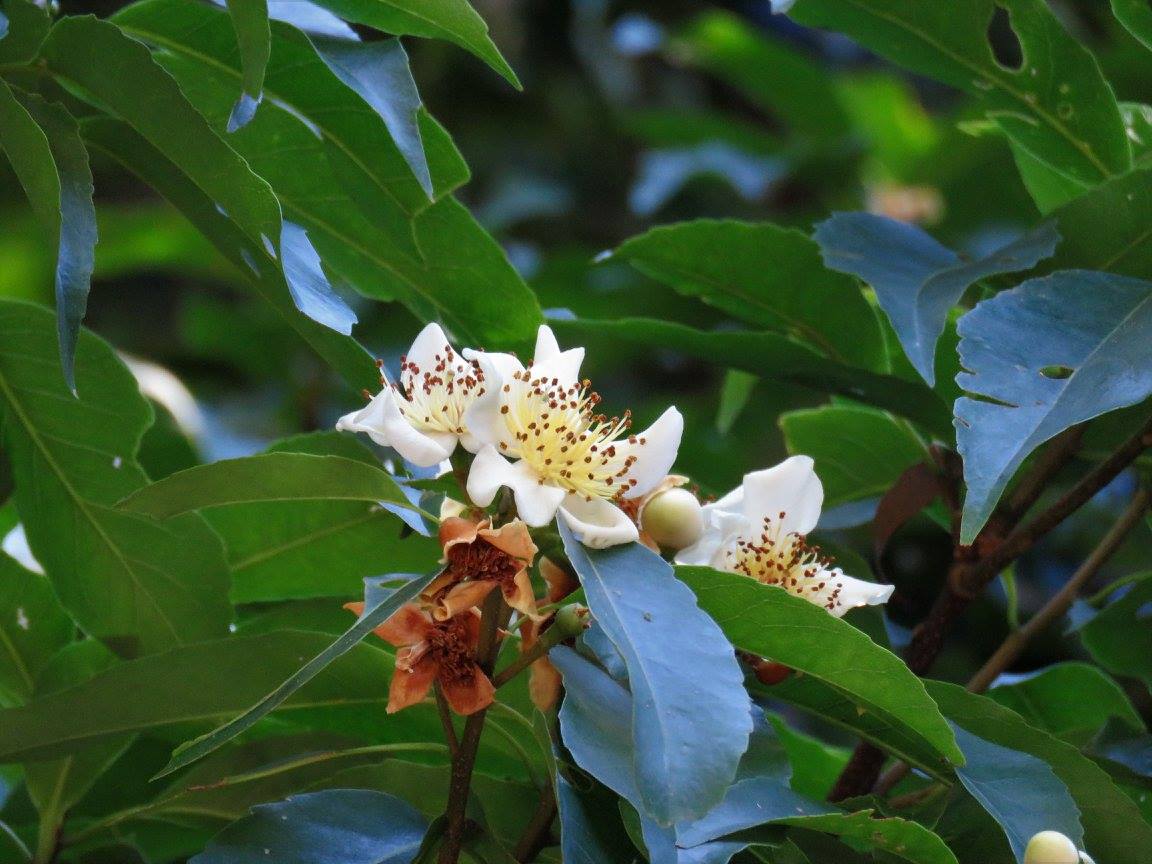
木荷-茶科
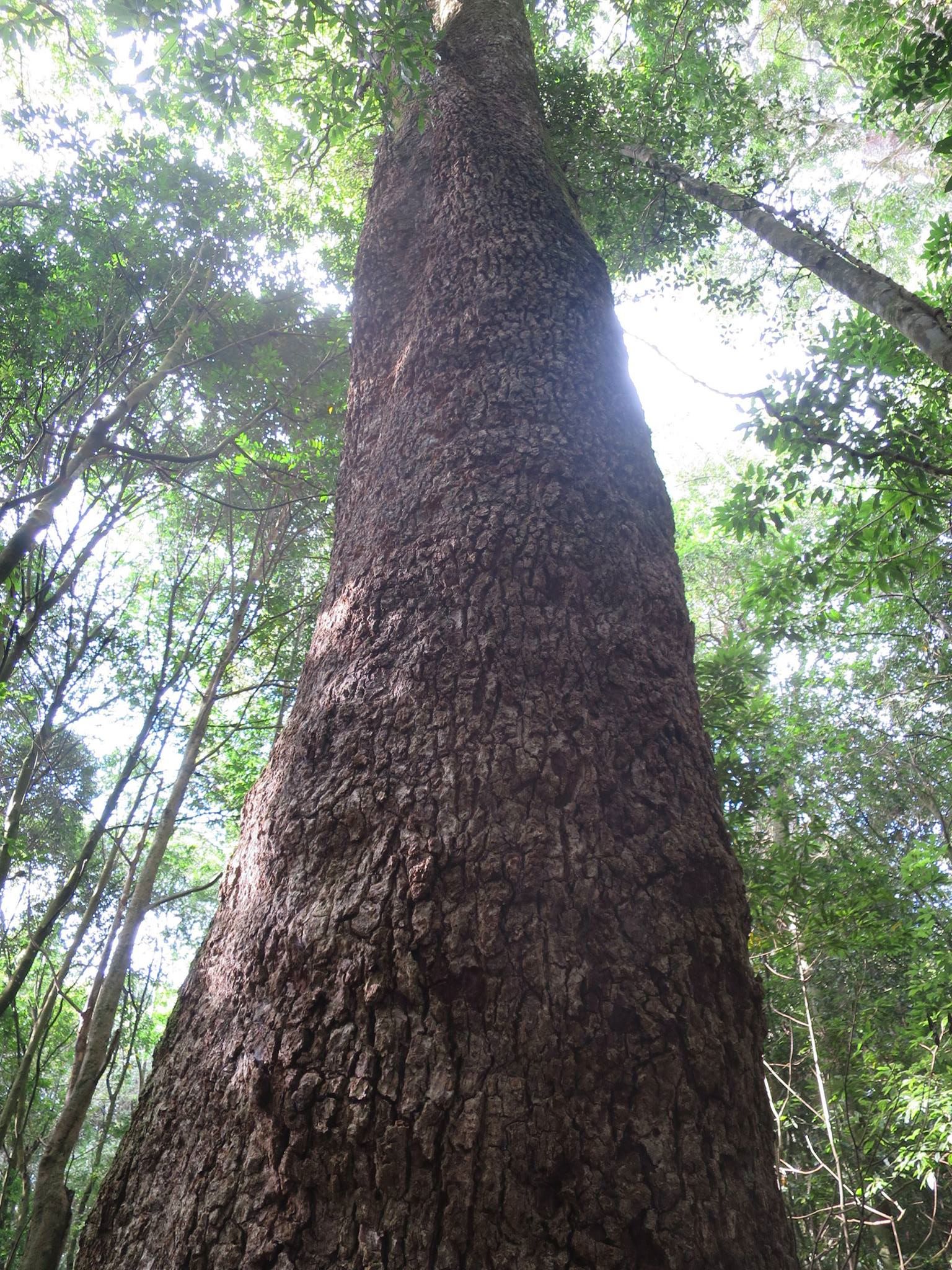
這片森林除了木荷外,樣區週邊也有許多其他的大樹,如青葉楠、墨點櫻桃、鐵冬青、紫珠葉泡花、杏葉石櫟、薯豆、黃杞、錐果櫟、烏心石、狹葉櫟、長尾栲,這些大樹也都高達15~30m。
Besides Schima superba, in the surrounding area are other giant trees such as Machilus zuihoensis var. mushaensis, Prunus phaeosticta, Ilex rotunda, Meliosma callicarpaefolia, Lithocarpus amygdalifolius, Elaeocarpus japonicus, Engelhardtia roxburghiana, Cyclobalanopsis longinux, Michelia compressa, Cyclobalanopsis stenophylloides, and Castanopsis carlesii. Those giant trees are at the height of 15 meters to 30 meters.
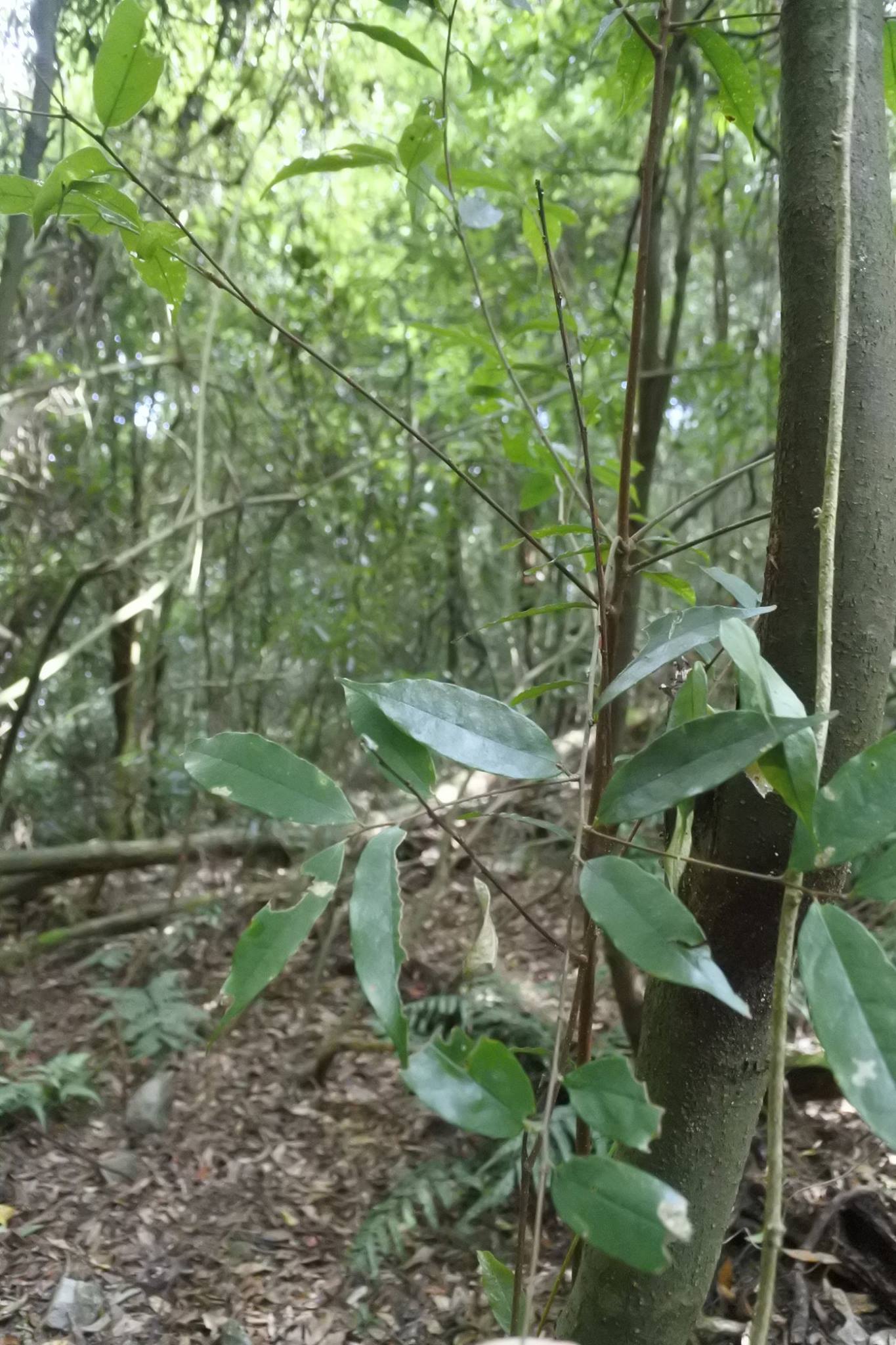
墨點櫻桃
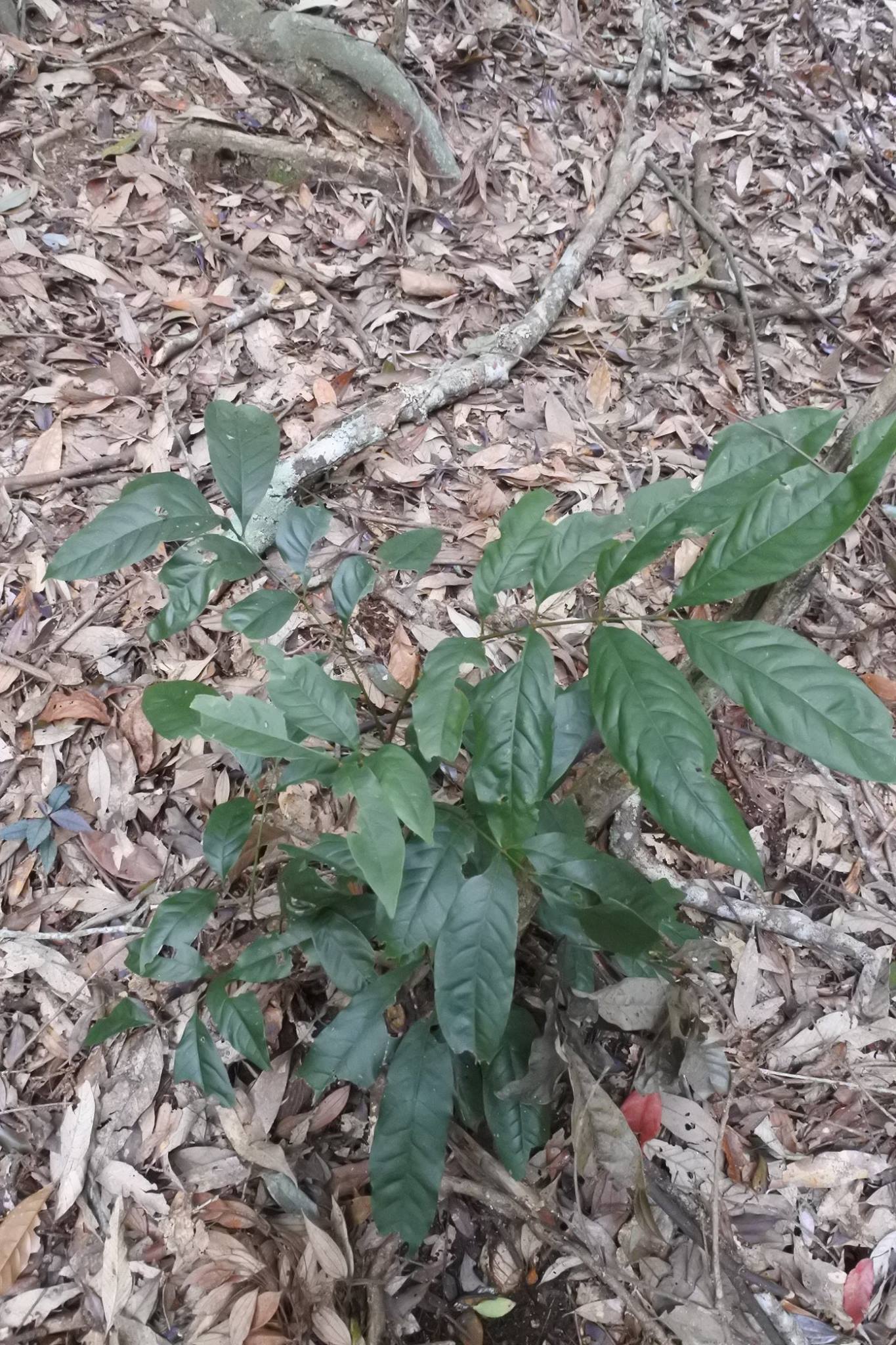
黃杞
在這次活動的觀察中,除了樣區的緩坡平台有較粗壯的大樹外,其他陡峭的邊坡,則大部分是胸徑20cm以下瘦瘦的樹。從樹的徑級,約略可看出這片森林的年齡,徑級愈小的,就愈年輕,換言之,這裡陡坡的森林是處於一個隔幾十年就會更新情形,這可能是地震、降雨產生的崩塌所造成。
Besides the giant trees in the gentle slope sampling area, in other steep hillsides are slender trees under 20 cm of diameter at breast height. We can roughly estimate the age of the forest with levels of diameters at breast height. The smaller the diameter is, the younger the forest. In other words, the forest in the steep slope renews every several decades, this may be caused by earthquakes and landslides triggered by heavy rainfall.
大甲溪中游以上大部份都是像這樣「年輕」的森林,「年輕」的森林代表這裡常崩塌,也代表這裡的地質非常脆弱,故中橫是否要不斷花錢重建,沿線森林的「年齡」亦是評估的重要指標。
Above the midstream of Da- Chia River are mostly young forest like this, a “young” forest means it undergoes frequent landslides and the geologic structure is extremely fragile. Therefore, the costly reconstruction of Central Cross-lsland Highway should be reconsidered as the age of the forest along the highway serves as an indicator.
除了崩塌外,在天然林裡的倒樹,也是產生更新的機制,許多在樹冠層下的小樹,待在陰暗的環境下長達10年以上,他們在等待大樹倒下壓垮森林,所產生的破洞,這個破空讓陽光得以照射到這些小樹,而這些小樹也才有足夠的能量,往上生長來接替這棵大樹在樹冠層的位置。
Besides landslide, the fallen trees renew the natural forest as many saplings have stayed underneath the canopy layer for over ten years, waiting for the giant tree to fall and make space for sufficient sunlight to reach tiny saplings underneath. So these saplings can begin rapid growth to take place of the giant trees.
台灣涵蓋了北半球80%森林生態,臺灣山林復育協會第一波每月踏查天然林的巡禮,再過5個月就即將滿二年。回顧剛開始時,許多人因野外經驗比較少,故進入森林中,顯得十分生嫩,但現在這些人看起來不僅生龍活虎,而且還能協助帶領新的夥伴學習生態調查。
Taiwan is blessed with 80% of the forest eclogy in Northern Hemisphere. Taiwan Reforestation Association holds monthly ecology trips, and in five months, it will have been two years since we founded the association. We’re happy to see our members become more experienced doing research in the forests.
感謝這二年來,大家的相隨,讓我們彼此互勉、互助、互學,這段日子也感謝陸續有許多人奉獻了山坡地,來作為復育實踐的基地。
We want to thank everyone for participating. We also want to give thanks to those landowners who contribute their land for reforestation.夜裡常常在想,能認識這群好友一起做這麼有意義的事,雖然辛苦,但沉浸在這樣的過程中,感覺真的很幸福!
At nights, I think of all the friends working towards our goal, though it’s tough, but emerging in the process brings the true happiness and fulfillment.
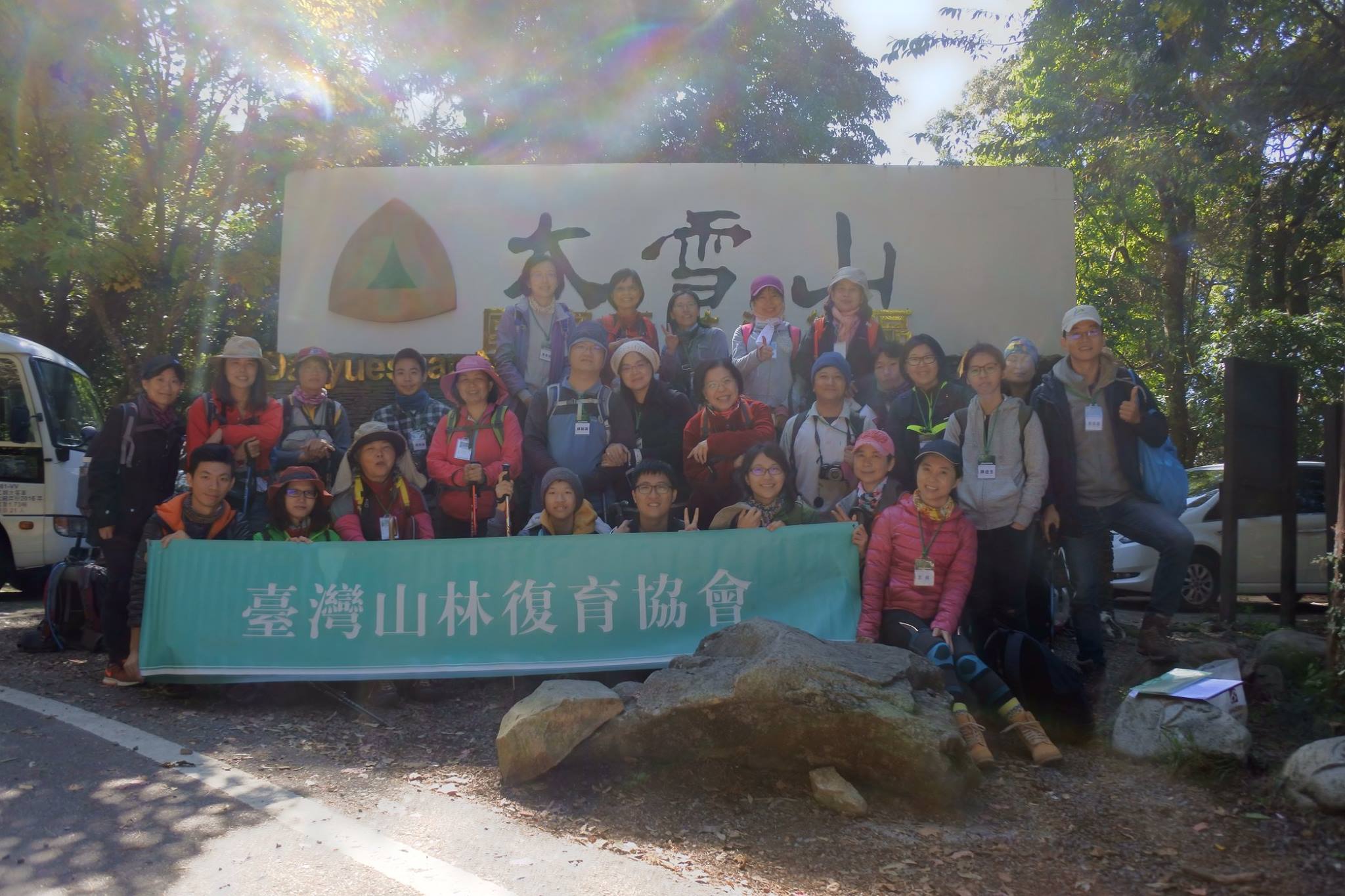
大合照
附件:
臺灣山林復育協會《谷關七雄─屋我尾山生態調查》
Taiwan Reforestation Association
《The Seven Heroes of Guguan- Mount Wuwowei 》Ecological Survey
日期:2017/10/22
Date: 2017/10/22
地點:屋我尾山步道2.5km
Site Name: Mount Wuwowei 2.5 K
植物社會:木荷─墨點櫻桃
Plant Society: Schima superba- Prunus phaeosticta
坡度3°;坡向120°
Slope 3°; Slope Direction 120°
海拔高度:1765m
Height Above Sea Level: 1765m
樣區面積:20m×20m
Sample Area: 20m×20m
座標:247021, 2678553
Coordinate: 247021, 2678553
備註:樣區週邊的大樹,杏葉石櫟、薯豆、黃杞、錐果櫟、烏心石、狹葉櫟、長尾栲。
Remarks: Giant trees in the surrounding area are Machilus zuihoensis var. mushaensis, Prunus phaeosticta, Ilex rotunda, Meliosma callicarpaefolia, Lithocarpus amygdalifolius, Elaeocarpus japonicus, Engelhardtia roxburghiana, Cyclobalanopsis longinux, Michelia compressa, Cyclobalanopsis stenophylloides, and Castanopsis carlesii.
調查:陳欣一;紀錄:黃香容
Surveyor: Hsin Yi Chen; Notetaker: Shiang Rong Debbie Huang
~T1樹冠層,高度30m,覆蓋度50%~
T1 Upper Tree Layer, Height 30 m, Range of Cover 50%
木荷(3,1)、鐵冬青(2,1)、青葉楠(2,1)、墨點櫻桃(2,1)、紫珠葉泡花(1,1)、海洲骨碎補(+,1)、藤木槲(+,2)
Schima superba(3,1), Ilex rotunda(2,1), Machilus zuihoensis var. mushaensis(2,1), Prunus phaeosticta(2,1), Meliosma callicarpaefolia(1,1), Davallia mariesii(+,1), Embelia laeta(+,2)~ T2次冠層,高度15m,覆蓋度80%~
T2 Lower Tree Layer, Height 15m, Range of Cover 80%
木荷(1,+ )、白新木薑子(1,+ )、長葉木薑子(2,1)、厚皮香(1,+ )、青葉楠(霧社楨楠) ( 2,+ )、大葉木犀(1,1)、紅花八角(1,1)、烏心石(1,+ )、紫珠葉泡花(2,1)、墨點櫻桃(3,2)、杜虹花(1,+ )、山香圓(1,+)、三葉崖爬藤(+,+)、香桂(1,+)、綠樟(清風藤科) (1,1)、短尾葉石櫟(1,1)、藤木槲(+,1)、山紅柿(+,+)、江某(1,1)、小膜蓋蕨(+,1)、糊樗(+,+)、玉山灰木(+,1)、細枝柃木(+,1)、米碎柃木(+,1)、糙莖菝契(+,+)、海洲骨碎補(+,1)、山茶葉灰木(+,+)
Schima superba(1,+ ), Neolitsea sericea(1,+ ), Litsea acutivena(2,1), Ternstroemia gymnanthera(1,+ ), Machilus zuihoensis var. mushaensis( 2,+ ), Osmanthus matsumuranus(1,1), Illicium arborescen(1,1), Michelia compressa(1,+ ), Meliosma callicarpaefolia(2,1), Prunus phaeosticta(3,2), Callicarpa formosana(1,+ ), Turpinia formosana(1,+), Tetrastigma formosanum(+,+),Cinnamomum subavenium(1,+), Meliosma squamulata(Sabiaceae) (1,1), Pasania harlandii(1,1), Embelia laeta(+,1), Diospyros morrisiana(+,+),Schefflera octophylla(1,1), Araiostegia perdurans(+,1), Ilex formosana(+,+),Symplocos morrisonicola(+,1), Eurya loquaiana(+,1), Eurya chinensis(+,1), Smilax bracteata var. verruculosa(+,+),Davallia mariesii(+,1), Symplocos congesta(+,+)~H地被層,高度1m,覆蓋度10%~
廣葉鋸齒雙蓋蕨(1,2)、山桂花(1,2)、紅花八角 (+,1)、白新木薑子(+,1)、玉山灰木( +,1)、香桂(+,1)、狗骨仔( +,+)、糙莖菝契(+,+)、紫珠葉泡花( +,1)、長葉木薑子( +,1)、稀子蕨( +,+)
H: herbaceous layer, Height 1m, Range of Cover 10%
Diplazium dilatatum(1,2), Maesa japonica(1,2), Illicium arborescen (+,1), Neolitsea sericea(+,1), Symplocos morrisonicola( +,1), Cinnamomum subavenium(+,1), Tricalysia dubia( +,+), Smilax bracteata var. verruculosa(+,+),Meliosma callicarpaefolia( +,1), Litsea acutivena( +,1), Monachosorum henryi( +,+)—————————
※改良式Braun-Blanquet調查法:
調查時記錄植被的層次、分層高度、各層次總覆蓋度、各層次組成物種之覆蓋度與群聚度。
Improved Braun-Blanquet cover-abundance scale Survey Method:
Record plant levels, height in each level, range of cover in each level, range of cover and abundance rating of each composite in each level覆蓋度:
Range of Cover:
+,0~3%
1,3~10%
2,10~25%
3,25~50%
4,50~75%
5,75~100%群聚度:
Abundance Rating:
+,出現1~2株
+, 1-2 individuals
1,零星分散
1, sparse
2,普遍分布或小塊群聚分布
2, small grouping
3,中等群聚分布
3, moderate grouping
4,大塊群聚分布
4, large grouping
5,全面分布
5, Large overall grouping
「真诚赞赏,手留余香」
真诚赞赏,手留余香
使用微信扫描二维码完成支付
